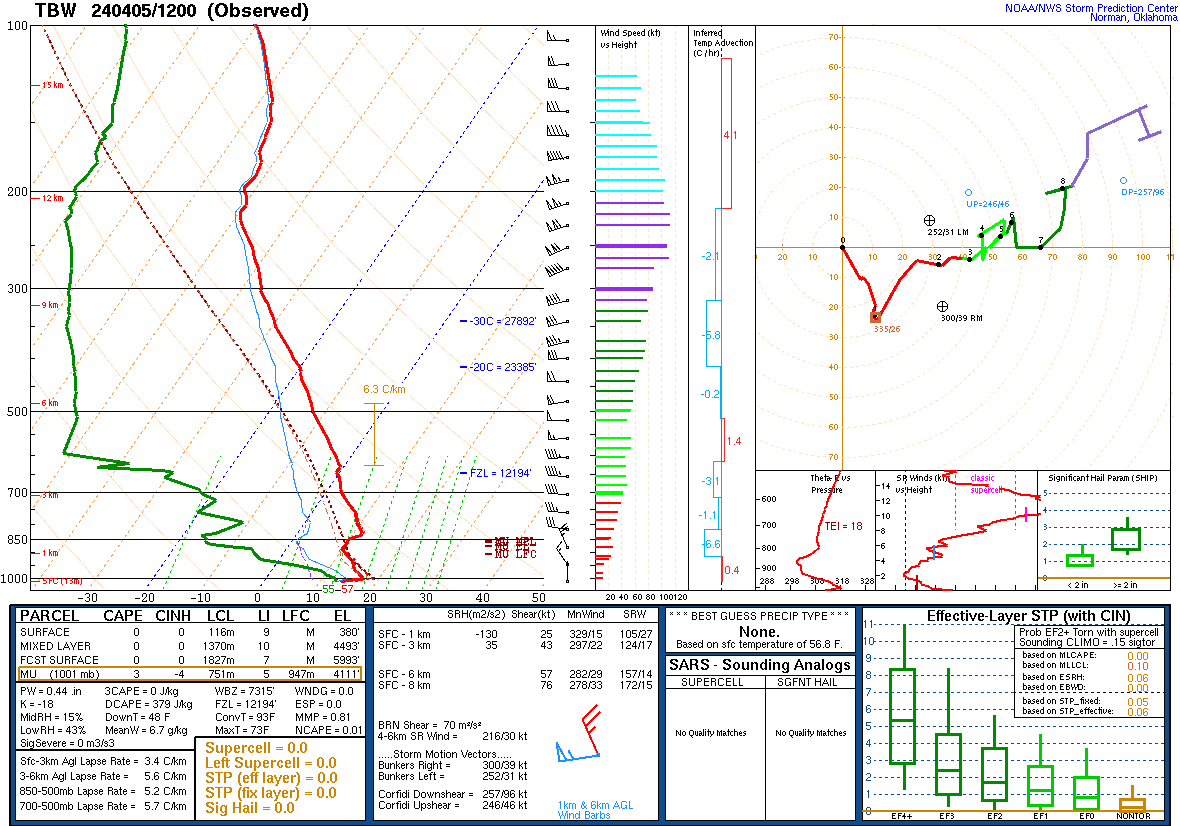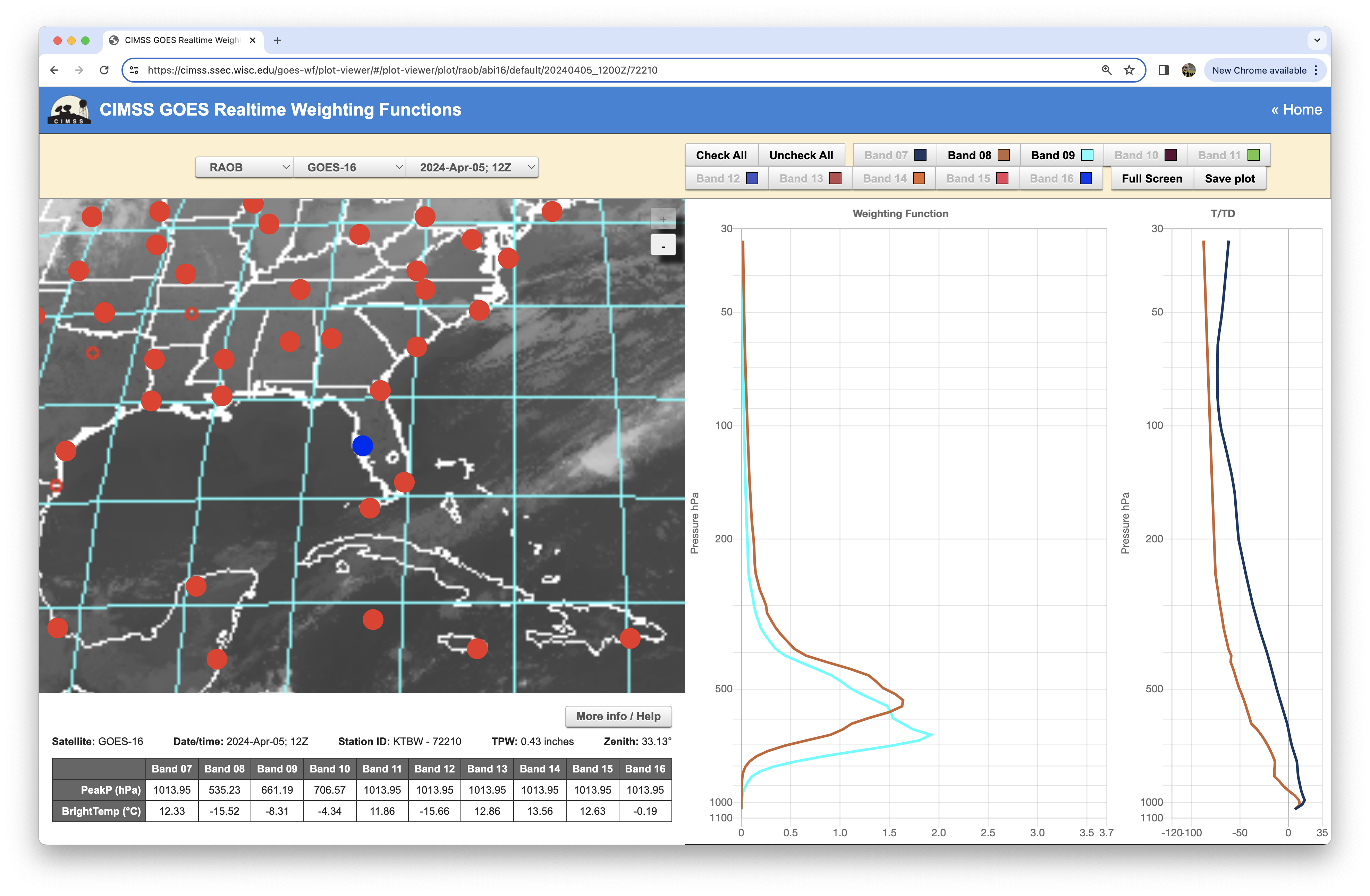Unusually dry air aloft across Florida
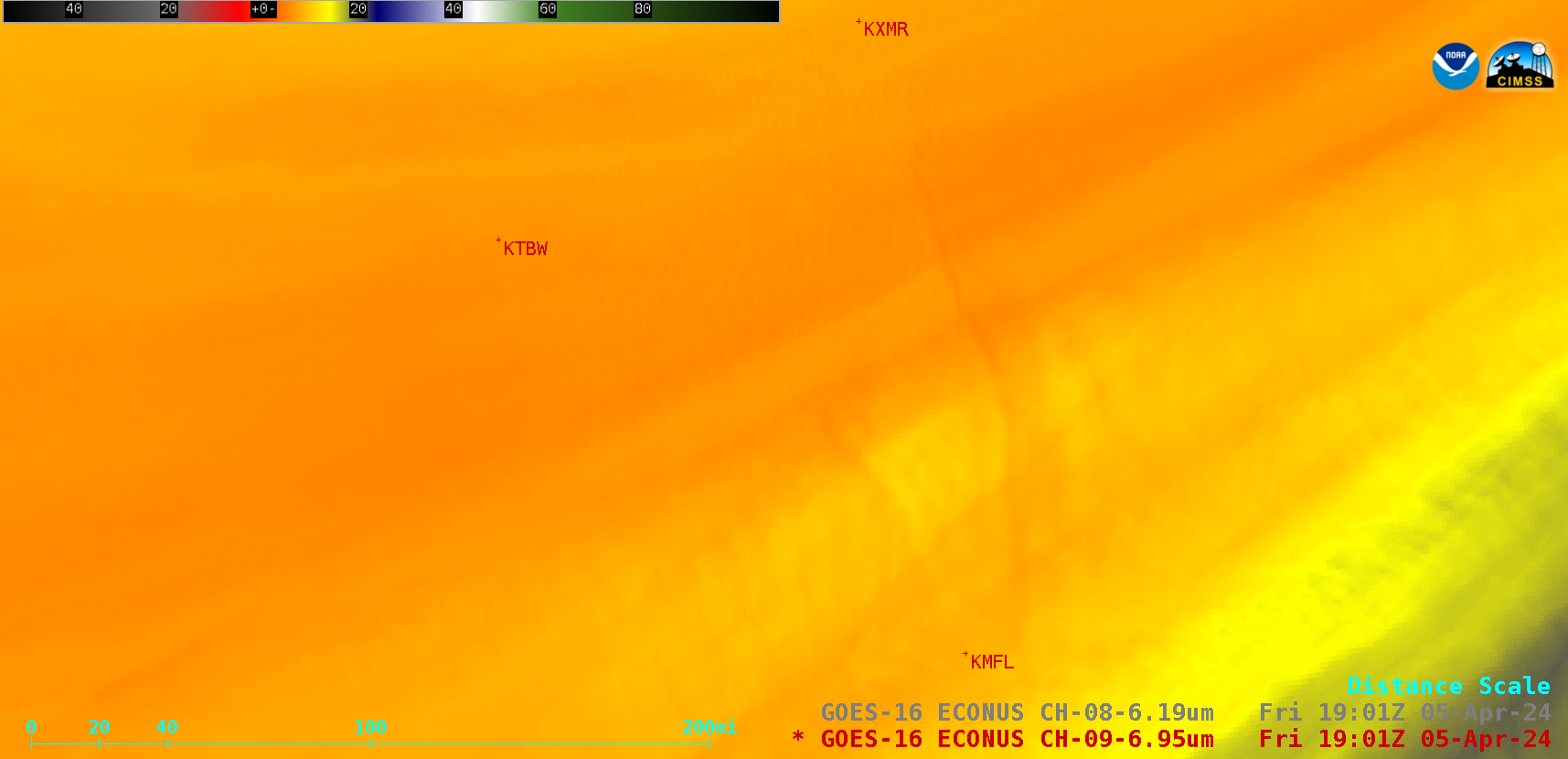
GOES-16 Mid-level (6.9 µm) and Upper-level (6.2 µm) Water Vapor images (with/without a map overlay), from 1201 UTC on 05 April to 0001 UTC on 06 April; rawinsonde sites are plotted in red [click to play animated GIF | MP4]
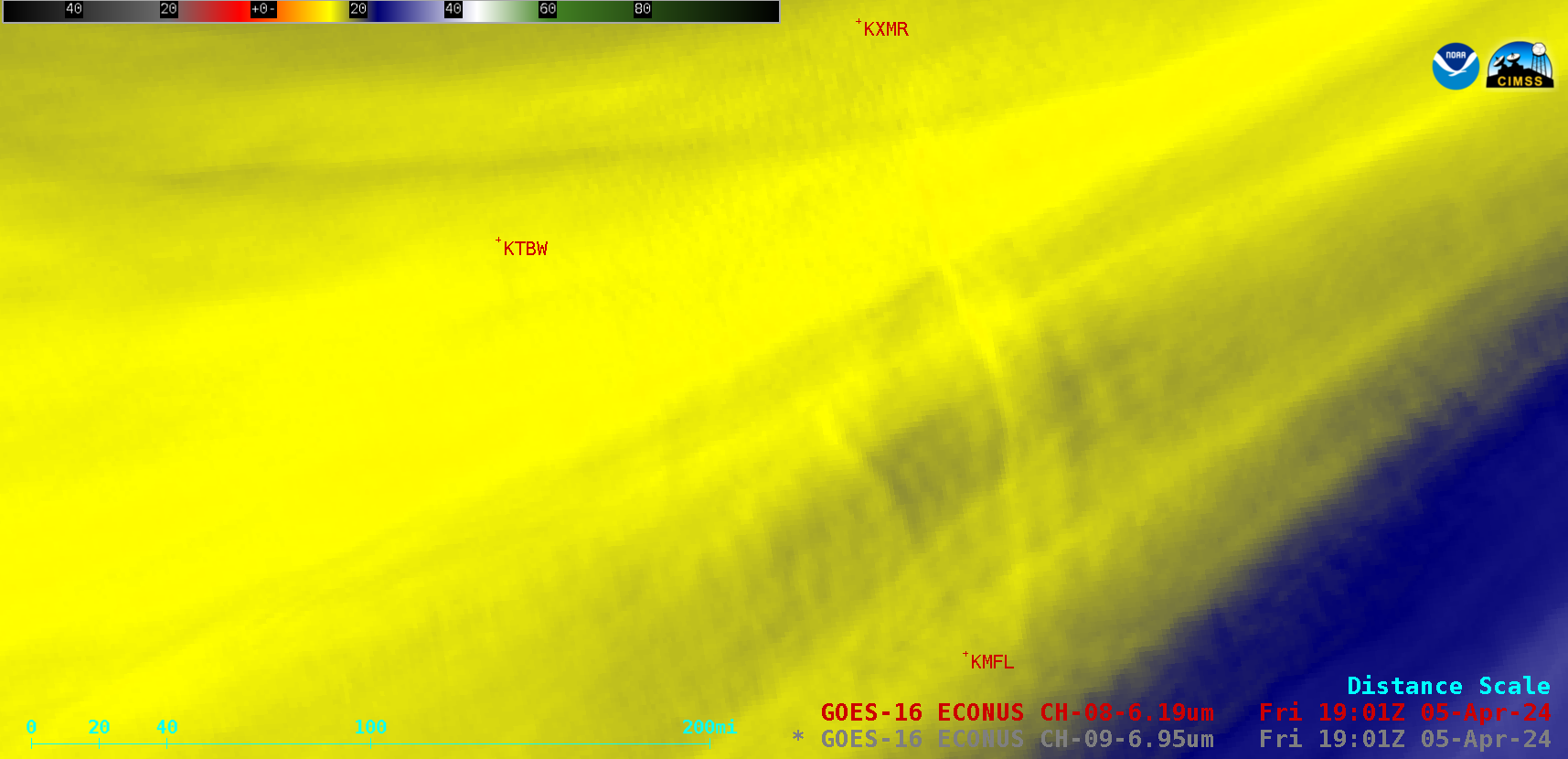
GOES-16 Mid-level (6.9 µm) and Upper-level (6.2 µm) Water Vapor images (with/without a map overlay) at 1901 UTC on 05 April; rawinsonde sites are plotted in red [click to play animated GIF | MP4]
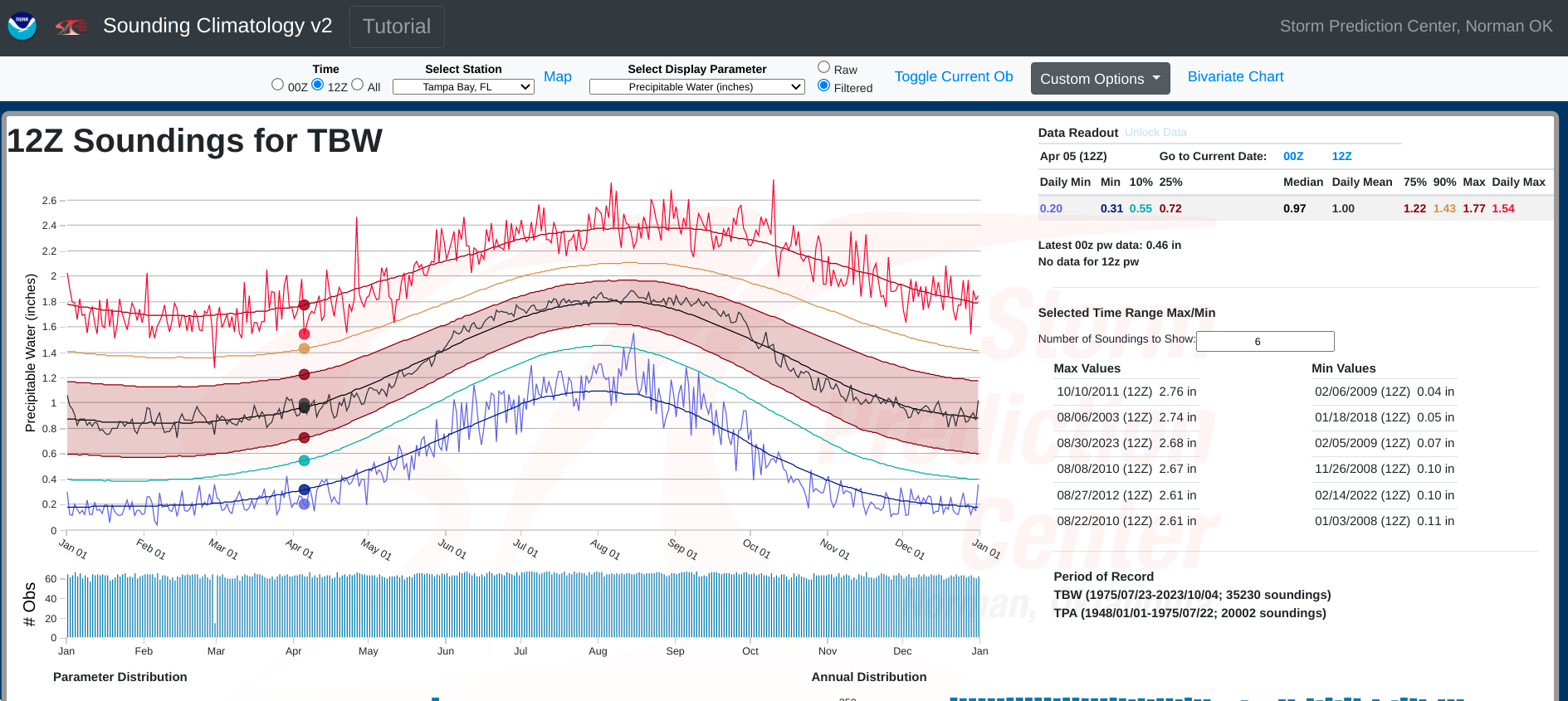
Climatology of Total Precipitable Water for all 1200 UTC soundings on 05 April at Tampa Bay [click to enlarge]


